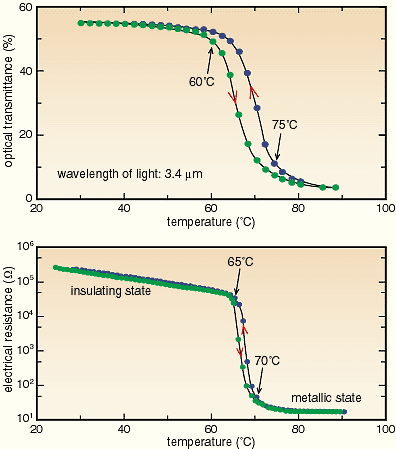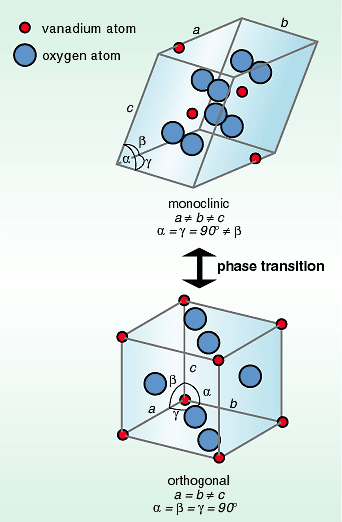Vanadium oxide (VO2) undergoes a phase transition at 68 degrees with a large change in electrical resistance. Making thin films
from a bulk crystal broadens markedly the potential applications
of material properties. For example, thin films of VO2 with fine pattern structures may be used as thermally activated
electronic or optical switching devices for optical fibers or
sensors. The only difficulty is the fabrication of very thin films
without crystalline defects from such ceramics as metal oxides
on various substrates, and to get the desired properties.
We have tried to synthesize single crystalline thin films by vaporizing
metallic vanadium using a pulsed laser (a second harmonic of YAG
laser; wavelength: 532 nm; energy: 2 J) under oxygen gas pressure
(1.3 *10-3 -1.1 *10-2 Pa) and depositing it on the (0001) plane of a sapphire substrate
to make VO2 film. The oxide thin films with 100 nm thickness thus grown are
found to be high quality crystalline as demonstrated by X-ray
diffraction and by the helium ion (He+) Rutherford back scattering method. The electrical resistance
and the optical transmittance of the VO2 film were measured at increasing and decreasing temperatures
(Fig. 4-7). At 68 degrees, an abrupt changes in the resistance is observed within the temperature
range of 0.8 degrees. This change is accompanied with a reversible transition from metal
to insulator, and simultaneously with an infrared transmittance
change of the film. We found that these reversible temperature-change
in the properties of the VO2 thin crystals can be attributed to structural change from monoclinic
at lower temperature to orthogonal at higher temperatures (Fig.
4-8). |

